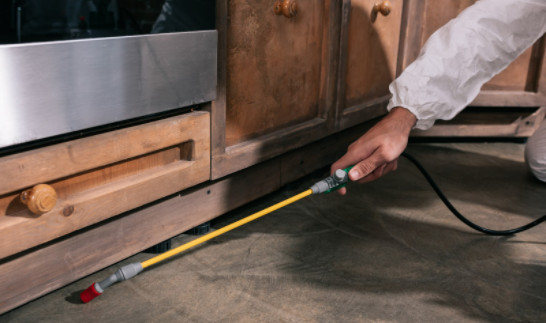The Role of Integrated Pest Management in Emergency Pest Control

Integrated Pest Management (IPM) is a smart way to handle pests using nature-friendly methods. This is instead of relying only on chemical pesticides. IPM combines different practices to keep pest numbers low. This approach is super important, especially in emergencies when quick action is needed.
Traditional methods might not work well or could harm the environment. In these situations, IPM helps by using safer and more effective strategies. Here are the key roles that emergency pest control plays in managing pests during emergencies.
Let's explore how it ensures the safety of our surroundings!
Monitoring and Identification
A key part of IPM is constantly checking and correctly identifying pests. This is important in emergencies. This is because it helps figure out what types of pests are there and how many. By knowing exactly which pests are present and their numbers, decision-makers can create better emergency plans.
Monitoring methods may include:
- traps
- visual checks
- special tools
This is all aimed at accurately finding the problem.
Maricopa County professionals performing pest control in Scottsdale know the importance of precise identification before applying targeted treatments. Their expertise helps eliminate infestations efficiently while preventing future outbreaks.
Threshold Establishment
Determining and setting action thresholds is another important job of IPM in emergency pest control. An action threshold is the pest population level where control actions need to be taken to prevent serious damage or harm. These thresholds help decide how urgent and big the response should be.
For example, in a public health emergency with mosquitoes that carry diseases, the action threshold might be a lot lower than for agricultural pests, allowing for a more focused and efficient use of resources.
Prevention Strategies
Prevention is always better than cure, and IPM focuses on preventative measures. This is to control pest populations. This includes:
- managing habitats
- keeping areas clean
- using resistant crop varieties
In emergencies, these measures can slow pest spread and reduce the need for drastic controls later. Prevention strategies help create environments where pests can't easily survive. This makes it harder for them to thrive. Make sure to explore envirogpc.com/huntsville-al-pest-control/ for more info.
Control Methods
When action thresholds are sIn emergencies where pest populations are spreading, IPM uses a hierarchy of control methods, starting with the least risky to human health and the environment. Cultural, mechanical, biological, and chemical controls are used together to manage pest populations.
Cultural controls involve changing the environment to make it less attractive to pests. This includes crop rotation and planting times. Mechanical controls include physical methods like traps and barriers. Biological controls use natural predators or parasites to manage pests.
Evaluation
Post-implementation evaluation is an important part of IPM. It makes sure that the methods used are working and helps find areas that need improvement. By constantly checking, we can adjust strategies in real-time. This is very helpful in emergencies where things can change quickly.
By looking at what worked and what didn't, IPM helps create a flexible way to manage pests, making future actions better and more successful.
The Lifesaver Role of Emergency Pest Control
In conclusion, Integrated Pest Management (IPM) plays a crucial role in emergency pest control. It involves various steps like monitoring, prevention, control, and evaluation to manage pest problems effectively. IPM uses a mix of methods to control pests sustainably and focuses on long-term solutions.
This approach not only solves the immediate pest issue but also helps maintain the health and balance of ecosystems. By using IPM, we can address pest crises more effectively and create a healthier environment for everyone. Therefore, IPM is an essential tool for managing pests in emergencies.
Did you find this article helpful? Check out the rest of our blogs!